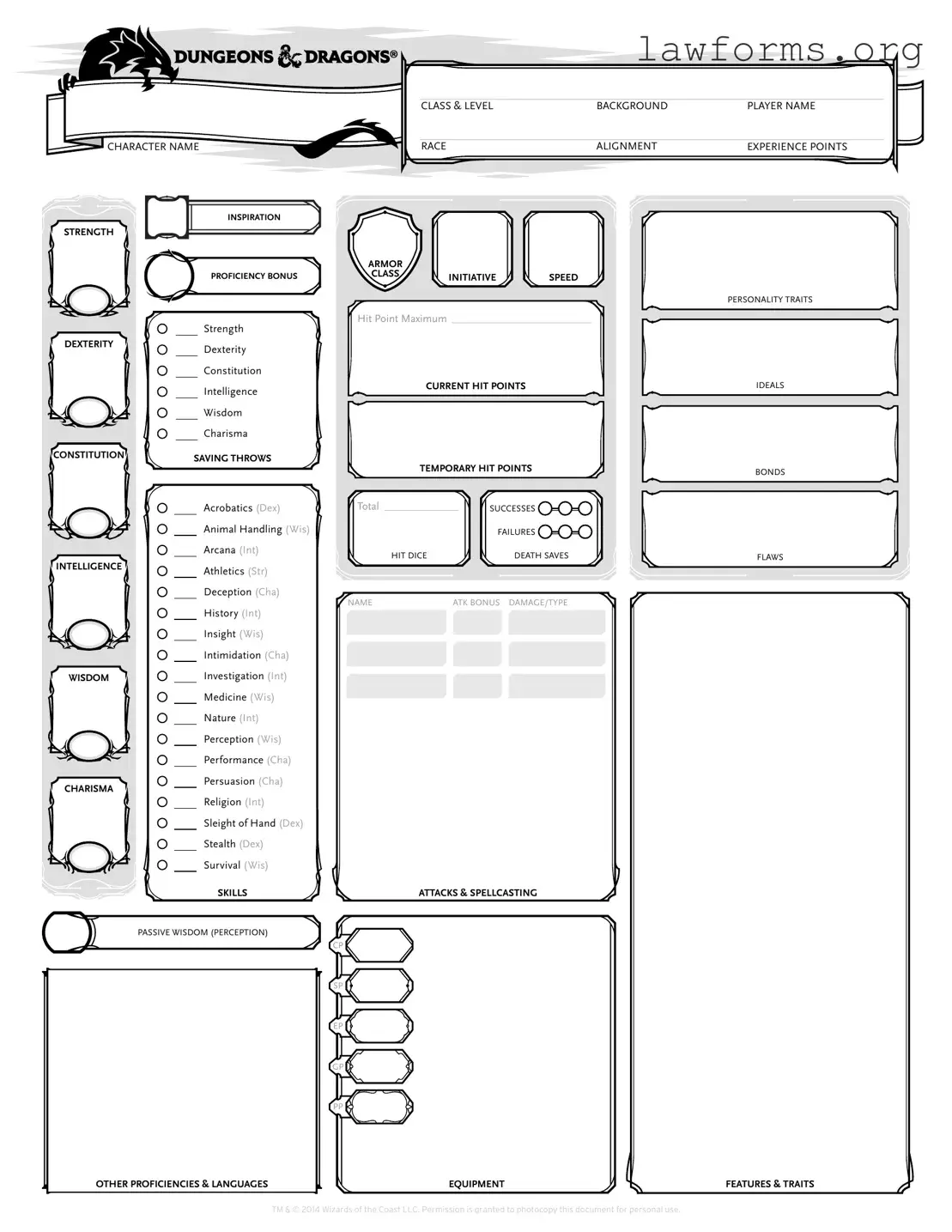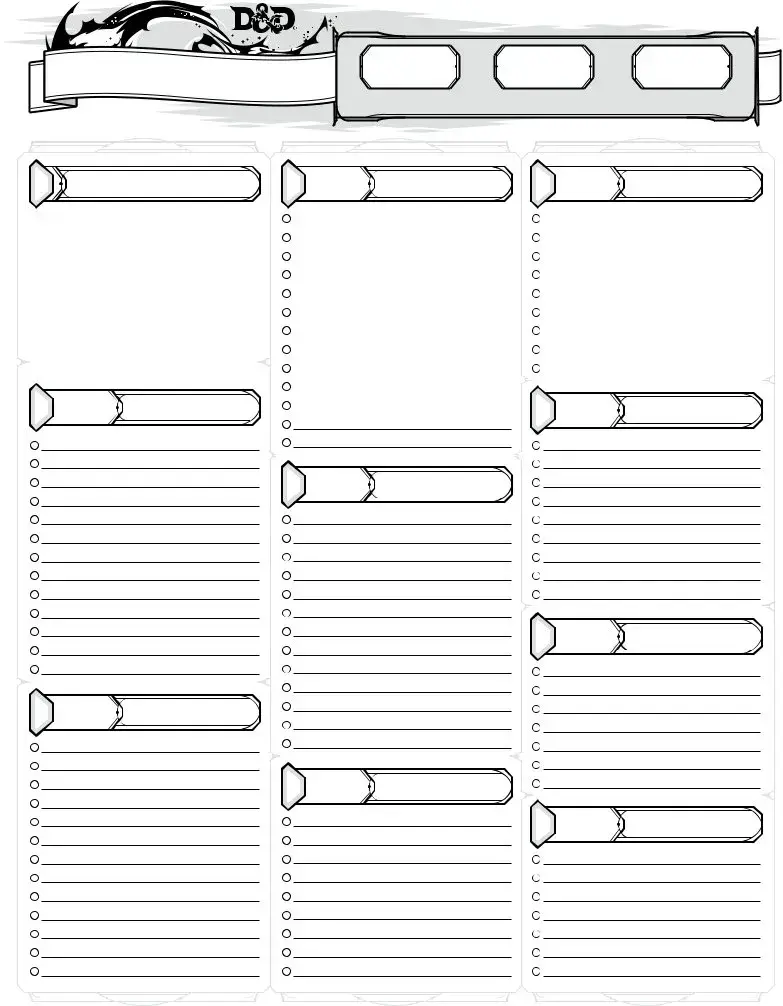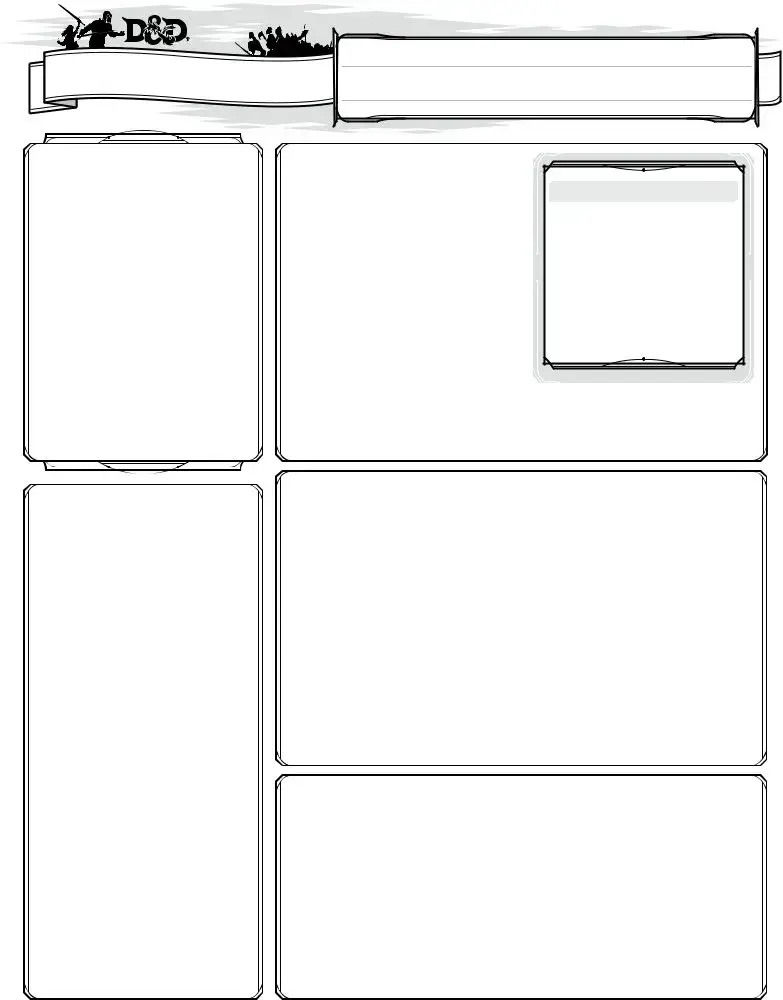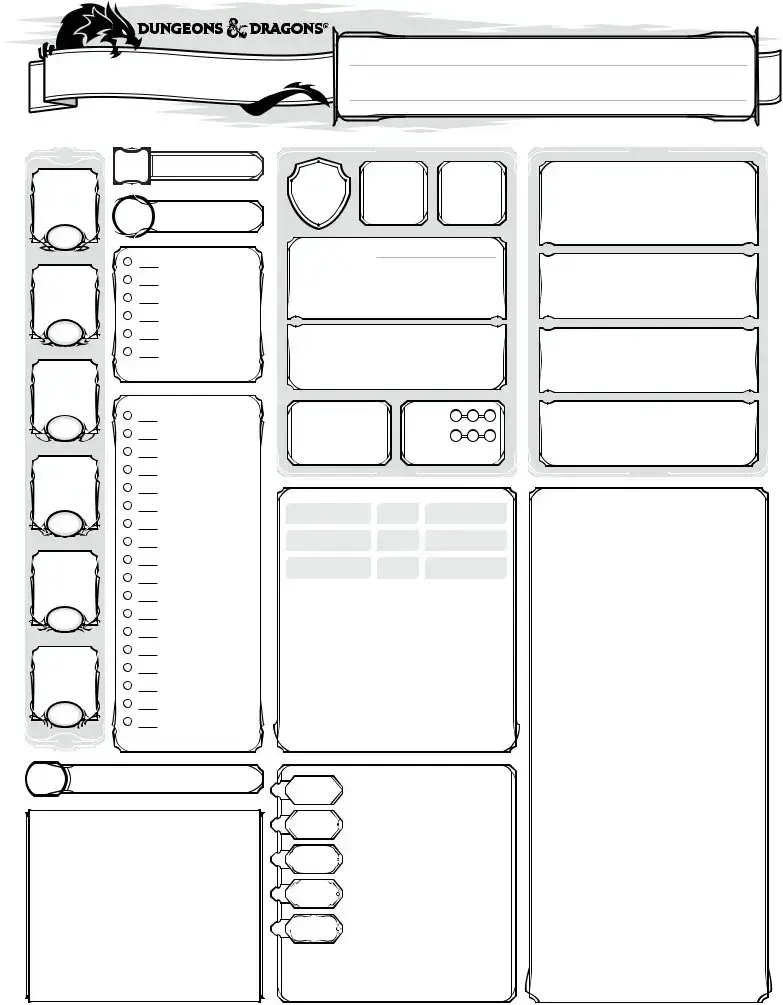Fill Out a Valid Dnd Character Sheet Template
The Dungeons & Dragons Character Sheet is a vital tool for players, serving as a comprehensive record of a character's abilities, skills, and background. It helps players track their progress and make informed decisions during gameplay. Ready to dive into your next adventure? Fill out the form by clicking the button below!
Customize Document Online













